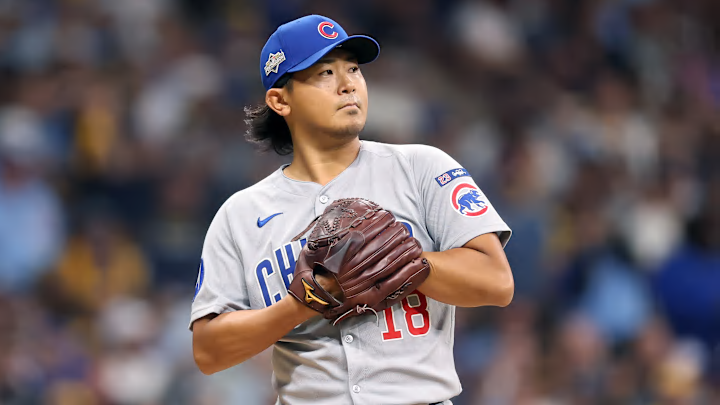The market just coughed up a plot twist nobody saw coming, and everybody is gaming out in November. An All-Star lefty who looked like a North Side fixture as recently as last fall is suddenly back on the board. For a San Diego Padres club that needs high-end run prevention without detonating future flexibility, this is the rare convergence of timing, fit, and opportunity, especially when the player’s 2025 wobbles might push his price into a range San Diego can actually play in.
Shota Imanaga didn’t just arrive in MLB, he erupted. Debut year in Chicago: 2.91 ERA, 1.02 WHIP, 174 in 173⅓, plus All-Star and a top-five Cy Young finalist. The four-seamer rode like it had frequent-flyer miles, the splitter ghosted hitters mid-DM. Somewhere, AL lineups felt a cold draft and didn’t know why.
Shota Imanaga hits free agency, putting Padres on alert
Then 2025 complicated the clean narrative. A hamstring strain cost him time, the fly-ball rate climbed, the strikeout rate dipped, and late-season ineffectiveness bled into October. He was even passed over for a do-or-die start. And yet, underneath the headlines, his WHIP actually improved (0.99), a hint that the ingredients are still elite if the execution finds its level.
Here’s the contractual shock: on November 4, 2025, Imanaga officially became a free agent after both sides walked away from their safety nets. Chicago declined a three-year, $57 million club option that would have tacked on 2026–28 to his original four-year, $53 million deal signed in January 2024.
That declination triggered a $15.25 million player option for 2026, one Imanaga also declined, choosing the open market instead. The Cubs can still extend a qualifying offer, preserving a chance to keep him or recoup a draft pick, but functionally the league just gained a frontline-ish lefty with swing-and-miss weapons and recent October scars that could shave dollars off the sticker.
From a Padres lens, the baseball case is straightforward. Petco Park’s run environment and the coastal air are tailor-made to help a pitcher whose blemish in 2025 was too many airborne mistakes. San Diego needs a weapon who misses bats at the top of the zone and kills right-handed damage with a splitter, Imanaga’s exact superpower when right. Pairing that shape with the club’s infield defense and a pitching infrastructure that has coaxed gains out of varied profiles is how you turn a “good outcomes if…” signing into a “this stabilized the whole staff” signing by June.
The performance arc is not a mystery; it’s a dual-chapter story. Chapter one began with a sensational 2024. Chapter two was 2025 regression, punctuated by a hamstring IL stint and an elevated fly-ball rate that punished mistake height. Down the stretch and into October, the misses got louder. He logged a shaky pair of postseason outings (Oct. 1 vs. San Diego: 4.0 IP, 2 ER; Oct. 6 at Milwaukee: 2.2 IP, 4 ER), and the Cubs’ trust wavered at the worst possible time. That’s the dent in the fender. It’s also the leverage point for a front office trying to buy upside without paying a pristine-paint premium.
The dollars and draft-pick math matter, and this is where Imanaga’s situation diverges from a typical top-of-market arm. If the Cubs tag him with a qualifying offer, San Diego would need to decide whether the draft-pick and potential international bonus pool penalties are worth it. The flip side: his second-year volatility and October struggles likely reframe expectations away from a nine-figure, six-year ask and toward something creative, shorter term with a higher AAV, opt-outs, and performance bonuses. That’s a lane the Padres have navigated before, and it suits a roster that needs high-impact innings now without dead money in 2028–29.
Of course, risk lives here too. The hamstring needs to be fully quiet. The fly-ball profile requires a stadium and plan that protect it. And the qualifying-offer situation can’t be hand-waved. But if the Padres believe their pitching group can restore the swing-and-miss and re-sequence the arsenal, this is exactly the sort of “buy the dip” strike that has outsized payoff by September.
